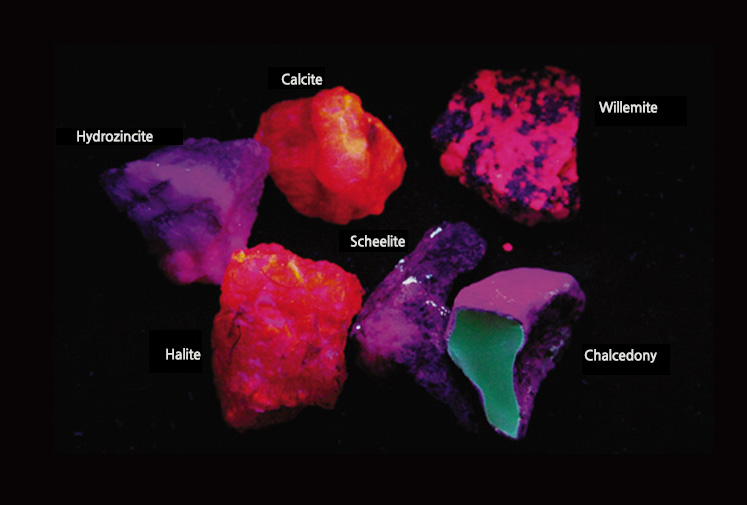Fluorescent minerals

When electrons in a mineral are excited by invisible short wavelength radiation, they are raised to higher energy levels. On reverting to their initial state, they emit visible light and the mineral is said to be fluorescent. The color change of fluorescent minerals is most spectacular when they are illuminated in darkness by ultraviolet light (which is not visible to humans) and they release visible light. The photograph shows examples of this phenomenon.
Such fluorescence is known to be caused by ions of the transition metals, Cr, Ti, U, Mn, Sn, Eu, Dy and Gd. Pure calcite does not show fluorescence. When some impurities or trace elements exist in the calcite, they work as activators and emit light under ultraviolet light or X-rays or cathode rays.
Most minerals fluoresce a single color: kyanite and emerald red, autunite and torbernite greenish yellow, scheelite bluish white, kunzite reddish yellow and willemite green. However, some minerals have multiple colors of fluorescence. For example, calcite has been known to fluoresce red, blue, white, pink, green, and orange.

Fluorite is characterized by its strong fluorescence. It's colors are varied: green, purple, blue, yellow, pinkish or black.

Under ordinary light
